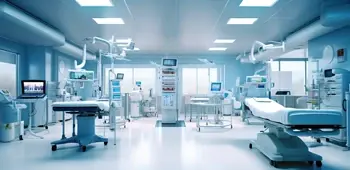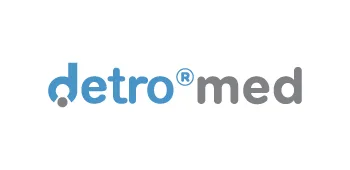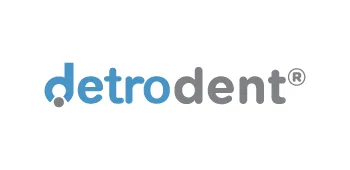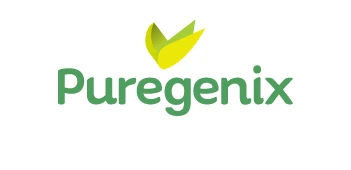Chlorhexidine An Antiseptic Power
Chlorhexidine is an effective antiseptic with antimicrobial properties. Chlorhexidine, which is used in a wide range of applications in the health sector, from surgical operations, clinical and intensive care units to body washing procedures in patients receiving long-term medical care, inhibits the growth of microorganisms and reduces the risk of infection. In this article, the properties, uses and effects of chlorhexidine will be discussed in detail.
What is Chlorhexidine?
Chlorhexidine is a chemical compound commonly used as an antiseptic and disinfectant. Chlorhexidine, which has strong antimicrobial properties, can be found in many different formulations, for example as a liquid, gel, cream or cleaning cloth.
Properties of Chlorhexidine:
Chlorhexidine has a broad-spectrum antimicrobial effect, meaning it can effectively kill many different microorganisms. This includes various pathogens, including bacteria, fungi and viruses. In addition, chlorhexidine can be effective for a long time, which reduces the frequency of repeated applications.
Usage Areas of Chlorhexidine:
Chlorhexidine is used in a variety of fields and is a suitable antiseptic for many different purposes. These include the following:
- Surgical Wash: It is used for cleaning and disinfecting surgical areas before surgical operations. Chlorhexidine helps prevent postoperative complications by reducing the risk of infection in surgical areas.
- Antiseptic Soap: Antiseptic soaps containing chlorhexidine are widely used for skin cleansing and disinfection. It effectively destroys microorganisms on hands, body and other skin surfaces.
- Body Wash Chlorhexidine is used in wound care and skin cleansing of patients. It acts as an effective antiseptic for cleaning injured areas and reducing the risk of infection.
Chlorhexidine and Surgical Wash:
Chlorhexidine plays an important role in disinfecting surgical areas. Before surgical operations, the hands of the surgical team and the patient’s skin are disinfected with antiseptic solutions containing chlorhexidine. This minimises the risk of infection during the operation.
Chlorhexidine and Antiseptic Soaps:
Antiseptic soaps containing chlorhexidine are widely used in hygienic skin care. They effectively kill microorganisms on hands, body and other skin surfaces and reduce the risk of infection. Especially in healthcare organisations, soaps containing chlorhexidine help staff and patients maintain hygiene standards.
Chlorhexidine and Patient Wash:
Chlorhexidine is often used as a skin antiseptic and is a common choice for patient washing. The patient washing process starts with the selection and preparation of the appropriate area to be washed on the patient’s body. During the application of chlorhexidine, it is applied on the skin with the help of cloth or cotton. In this way, it ensures that the microbes on the skin are killed and the risk of infection is reduced. According to the instructions for use of the product, chlorhexidine is left on the skin without rinsing for the duration of the effect, and then the requirements for cleaning and rinsing are fulfilled.
Patient washing process is provided by using chlorhexidine. Chlorhexidine helps to provide a hygienic environment by killing germs on the skin and reducing the risk of infection.
Conclusion:
Chlorhexidine is an effective antiseptic with broad-spectrum antimicrobial properties. It is used in a variety of fields, from surgical washing to antiseptic soaps and body wash.
Chlorhexidine protects the safety and health of patients and healthcare workers by reducing the risk of infection.
Chlorhexidine Question and Answer Section:
S: What is chlorhexidine and how does it work?
A: Chlorhexidine is an antiseptic with strong antimicrobial properties. It inhibits the growth of microorganisms by affecting their cell membranes. In this way, it reduces the risk of infection and provides hygiene.
S: How does chlorhexidine work?
A: Chlorhexidine acts by affecting the cell membrane of microorganisms. This causes bacteria, fungi and viruses etc. to die.
S: In which areas is chlorhexidine used?
A: Chlorhexidine is used in a wide range of applications, from surgical operations in clinics and intensive care units to body wash procedures in patients receiving long-term medical care. It is frequently used in hospitals, health centres, wound care, oral hygiene and skin cleansing.
S: What types of microorganisms is chlorhexidine effective against?
A: Chlorhexidine is effective against a wide range of microorganisms, including bacteria, fungi and viruses etc.
S: How is chlorhexidine applied?
A: Chlorhexidine is usually used in the form of a solution, gel, cream or cleaning cloth. It can be found in different forms according to the application area. When applied on the skin, it should be spread carefully and allowed to act for the specified time.
S: Is chlorhexidine safe to use?
A: Chlorhexidine is generally considered a safe antiseptic. However, it can cause allergic reactions or skin irritation in some people. It is important that the product is tested by the manufacturer before use and that the instructions are followed correctly.
S: How often should chlorhexidine be used?
A: Chlorhexidine can be used at different frequencies depending on the area and purpose of use. It is preferred for disinfection of surgical areas and skin cleaning-antisepsis.
S: Can long-term use of chlorhexidine cause any side effects?
A: When not used according to the instructions for use, it may cause skin irritation or sensitisation.





















